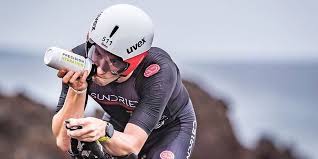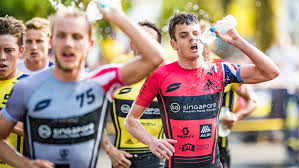As a triathlete, your performance isn’t just determined by how well you train—it’s also significantly impacted by how you fuel and hydrate your body. Nutrition and hydration play a critical role in optimizing your energy levels, endurance, and recovery during every stage of your training and races. Whether you’re a first-timer or a seasoned competitor, understanding the best fueling strategies can give you the edge you need to perform your best.
Before the Race: Building Your Energy Reserves
Proper nutrition starts long before race day. In the days leading up to your triathlon, your goal is to build up energy reserves and ensure your body is fully fueled to perform optimally.
1. Carb-loading: For longer races, especially Ironman or Half-Ironman, carbohydrate loading is a popular strategy. About 2-3 days before the race, increase your intake of complex carbs—whole grains, pasta, rice, potatoes, and fruits. This helps maximize your glycogen stores in your muscles and liver, providing energy for the long haul.
2. Hydrate, Hydrate, Hydrate: Being well-hydrated is critical, so start your hydration plan early. Aim for around 3-4 liters of water a day, depending on weather conditions and your needs. For optimal hydration, try electrolyte-infused drinks that replace lost minerals like sodium and potassium. Avoid excess caffeine or alcohol as they can lead to dehydration.
3. Pre-race Meal: About 3-4 hours before the race begins, consume a balanced meal that includes carbohydrates and protein, with little fat or fiber to avoid stomach discomfort. A bowl of oatmeal with banana and peanut butter or a piece of toast with scrambled eggs are solid choices. Avoid any high-fiber meals that might cause digestive issues mid-race.
During the Race: Keeping Your Energy Levels Steady
Triathlons are long, demanding events, and your energy needs shift throughout the race. Hydration and fueling during the event help maintain your performance and prevent “bonking,” the sudden fatigue that comes from depleted energy stores.
1. Hydration on the Course: During the race, staying hydrated is essential. While water is necessary, it’s just as important to replace electrolytes lost through sweat. Many triathletes use sports drinks or electrolyte tablets. Aim for about 500-700 mL of fluid per hour during the race, but adjust depending on the weather (hotter conditions might require more).
2. Fueling with Carbs: For triathlons longer than an hour, you should plan to consume 30-60 grams of carbohydrates per hour. This could come from energy gels, chews, or bars. Be mindful of your body’s response to different products—some athletes prefer liquid carbs, while others lean toward solid foods. Try training with these fuels before race day to ensure your stomach can tolerate them.
3. The Right Timing: Take your fuel in small, consistent amounts to avoid an energy crash. For example, take a gel or chew every 30-40 minutes, and don’t wait until you’re starving or dehydrated to consume more. The goal is to maintain a steady supply of energy.

After the Race: Speeding Up Recovery
The race might be over, but your body is still working hard to repair and recover. Proper recovery nutrition helps minimize muscle soreness and speed up your body’s ability to bounce back.
1. Replenish Carbs and Protein: In the first 30-60 minutes after the race, your body is in a prime state to absorb nutrients. Focus on replenishing both carbohydrates and protein. Carbs will help refill your glycogen stores, while protein helps repair muscle tissue. A great post-race snack could be a smoothie with fruit, protein powder, and some greens. Alternatively, a turkey sandwich or a protein bar can also do the trick.
2. Rehydrate and Restore Electrolytes: Don’t neglect hydration after the race. You’ve lost a significant amount of fluid and electrolytes through sweating, so it’s essential to restore those losses. Drink water, and consider electrolyte drinks or coconut water for natural rehydration.
3. Anti-inflammatory Foods: After the physical exertion of a race, your muscles may experience inflammation. Incorporate anti-inflammatory foods into your recovery meals, like salmon (rich in omega-3s), leafy greens, berries, and nuts. Turmeric and ginger are also known for their anti-inflammatory benefits and can be easily added to post-race meals or smoothies.
4. Get Enough Rest: Remember, recovery isn’t just about what you eat and drink. Adequate sleep and rest days are crucial for muscle repair. Aim for 7-9 hours of sleep per night, and take active recovery days with light activities like walking, swimming, or yoga to keep your muscles limber.
General Hydration Tips for Triathletes:
- Listen to Your Thirst: While it’s important to hydrate consistently, don’t overdo it. Drinking too much water without enough electrolytes can lead to a condition called hyponatremia (low sodium levels). Keep a balance between water and electrolyte drinks.
- Monitor Your Urine Color: A simple way to track hydration is by checking your urine color. Pale yellow is ideal, while dark yellow indicates dehydration, and clear urine might mean you’re overhydrated.
- Practice During Training: Your nutrition and hydration strategy should be tested during training, not race day. Experiment with different gels, drinks, and timing to see what works best for you.

Final Thoughts: Fueling for Triathlon Success
Nutrition and hydration are just as important as physical training when it comes to triathlon performance. By fueling properly before, during, and after the race, you’ll have the energy to power through each leg of the race and recover quickly afterward.
Remember, every athlete’s needs are different, so tailor your nutrition and hydration plan to what works best for you. With the right strategy in place, you’ll be able to optimize your performance and cross the finish line feeling strong.
Happy racing!
